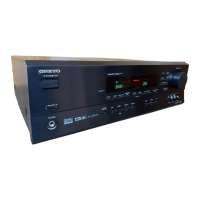Connecting Your AV Components--Continued
• Using Coaxial or Optical Connections
• Use a coaxial digital audio cable to connect the TX-SR501/
TX-SR501E's COAXIAL DIGITAL INPUT to the coaxial
output on your CD player, as shown.
OR
• Use an optical digital audio cable to connect the
TX-SR50 I/TX-SR501E's OPTICAL 2 DIGITAL INPUT
Gothe optical output on your CD player, as shown.
initially, the COAXIAL digital input is assigned to the CD
input source. If you connect your CD player to a different
digital input, you'll need Goassign that input to the CD input
source (see page 24).
• Using Analog Connections
Even if your CD player is connected digitally (coaxial or
optical), to use r'-II, or to record audio from your CD player,
you'll need to make analog connections as well.
Use an RCA/phono audio cable to connect the TX-SR501/
TX-SR501E's L/R CD IN connectors Gothe analog audio
outputs on your CD player, as shown.
CD pGayer
• Turntable with a Built-in Phone Preamp
Use an RCA/phono audio cable to connect the TX-SR501/
TX-SR501 E's L/R TAPE IN connectors to the audio outputs
on your turntable, as shown.
• Turntable without a Built-in Phono Preamp
Use an RCA/phono audio cable to connect the TX-SR501/
TX-SR501E's L/R TAPE IN connectors to the audio ouGputs
on your phono preamp, and use another RCA/phono audio
cable to connect the phono preamp's inputs to your turntable,
as shown.
J
17

